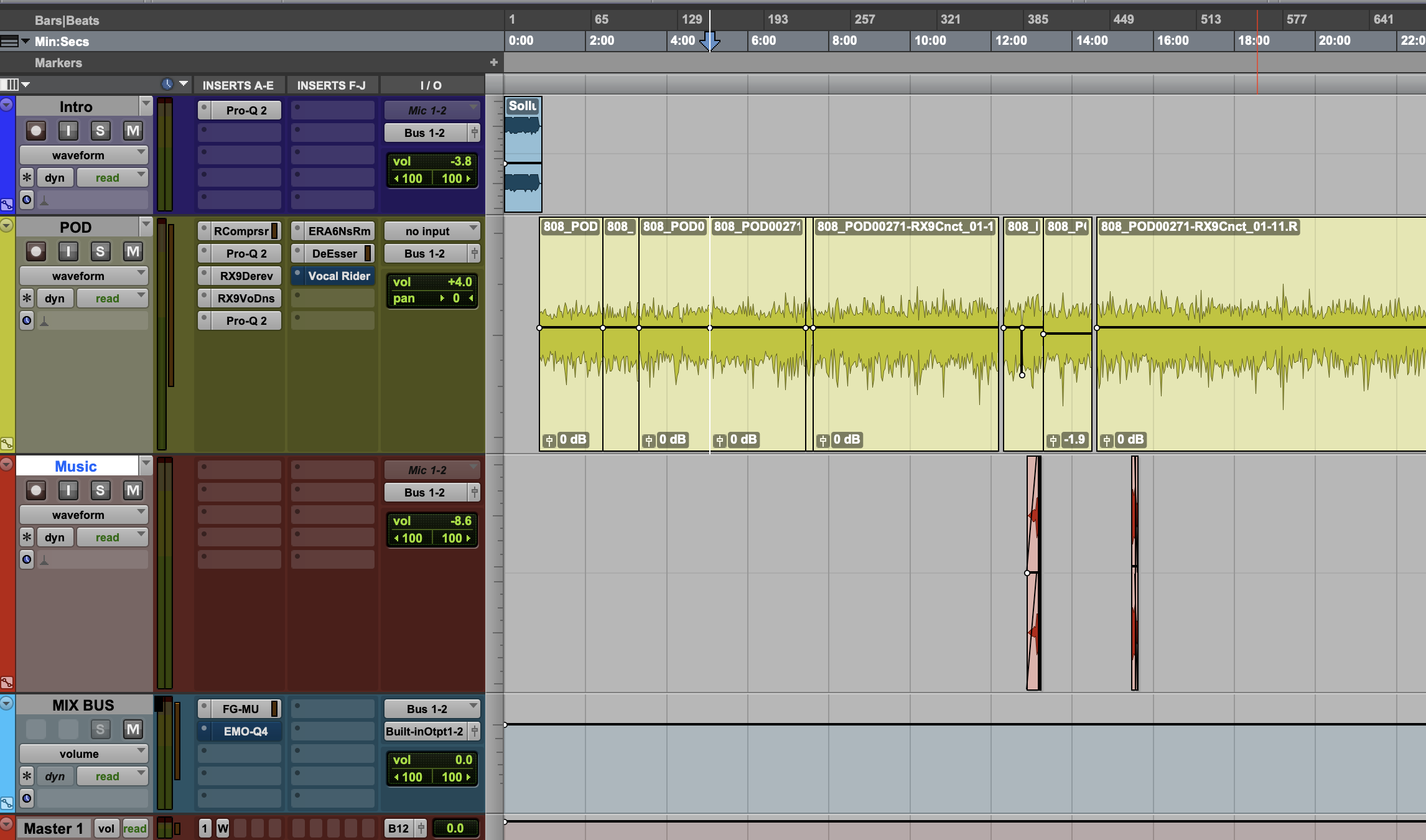
In the world of podcasting, the magic often happens behind the scenes. As seasoned podcast producers, we’ve learned that the difference between a good podcast and a great one often lies in mastering the art of how to edit a podcast.
It’s in the podcast editing process where raw recordings are transformed into engaging narratives, where the rhythm of conversation is fine-tuned, and where the listener’s experience is truly crafted.
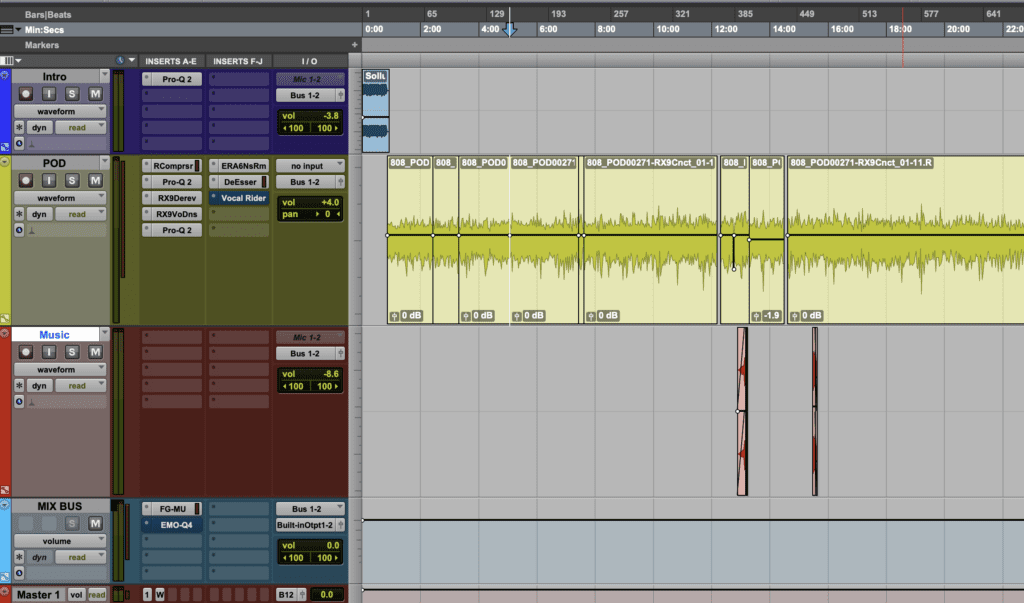
Editing in ProTools
Podcast editing, a blend of art and science, is the unsung hero that elevates audio quality, enhances listener engagement, and ultimately shapes the podcasting experience. It’s not just about cutting out mistakes or unnecessary parts; it’s about crafting a compelling auditory journey for your listeners.
From setting up an optimal recording environment to mastering advanced editing techniques, every step is crucial. And yes, even the choice of editing software can make a world of difference.
But fear not, this comprehensive guide will walk you through the entire process, helping you avoid common pitfalls and enhance your podcast’s overall quality.
Learning How To Edit a Podcast
Definition of Podcast Editing
Learning how to edit a podcast is a crucial component of the podcast production process. It’s not just about cutting and trimming audio files. The process is meticulous and involves refining the raw audio, removing unnecessary parts, enhancing the sound quality, and arranging the content to create a seamless and engaging audio experience.
It’s the stage where the raw audio is transformed into a polished podcast episode that your listeners will love. As podcast editors, we use a Digital Audio Workstation (DAW), a sophisticated tool that allows you to manipulate and enhance the audio files to create the perfect podcast episode.
Impact of Podcast Editing
The impact of podcast editing on the final product is immense. It’s the difference between a podcast that sounds amateurish and one that sounds professional. By improving the audio quality, we can ensure that our listeners can focus on the content without being distracted by background noise, inconsistent volume levels, or awkward pauses.
More importantly, a well-edited podcast can significantly enhance listener engagement. By cutting unnecessary parts, we can keep the content tight and focused, making it easier for our listeners to stay engaged and retain the information.
Our philosophy is CUT CUT CUT, less is more.
Preparation Before Editing
Recording Environment
Before you get that scissor tool ready to rock, you need to understand the essentials of capturing a clean podcast recording. Good audio saves a ton of time in post production.
A good recording environment is the foundation of a high-quality podcast. It’s not just about having a quiet space; it’s about creating an environment that minimizes echo and background noise.
Shit in, shit out. That’s an old saying when it comes to audio production. If the sound on the way into the recording, the final product wont sound great even with finessing and processing.
You’ve got to achieve a clean sound to get great results.
Here are some things to try/keep in mind before you hit record.
Smaller rooms filled with soft materials like carpets, curtains, and even furniture can significantly reduce echo and background noise.
If you’re just starting out and don’t have a dedicated recording space, don’t worry. You can create a makeshift recording environment by recording in a closet or even under a blanket. Remember, the goal is to capture the cleanest audio possible, which will make the editing process much easier.
Recording High-Quality Audio
Recording high-quality audio is not just about having a good microphone; it’s about how you use it. Here are a few tips that we’ve found useful over the years.
First, always warm up your voice before recording. This can be as simple as doing a few vocal exercises or even just talking for a few minutes. Second, maintain a consistent distance from the microphone. This will ensure that your volume levels remain consistent throughout the recording.
Third, watch your levels. You want to make sure that your audio is loud enough to be heard clearly, but not so loud that it distorts. Finally, be mindful of your breath. Try to breathe quietly and avoid breathing directly into the microphone.
Loud breathers can be annoying and distract listeners from your show!
Organizing and Backing Up Audio Files
Organizing and backing up your audio files is a crucial step in the podcast production process. We recommend creating a separate folder for each episode, where you can store all the related audio files. This will make it easier to find the files you need when it’s time to edit.
As for backing up, we can’t stress enough the importance of having at least two copies of your files stored in different locations. This could be an external hard drive, a cloud storage service, or even a dedicated backup service.
Remember, losing your audio files can be a devastating setback, so it’s always better to be safe than sorry.
How To Edit a Podcast
Importing Audio Files
You’ve gotta get your audio files into your chosen editing software. This is a straightforward process, but it’s crucial to get it right. You’ll need to locate the raw audio files on your computer and use the import function in your software to bring them into the project.
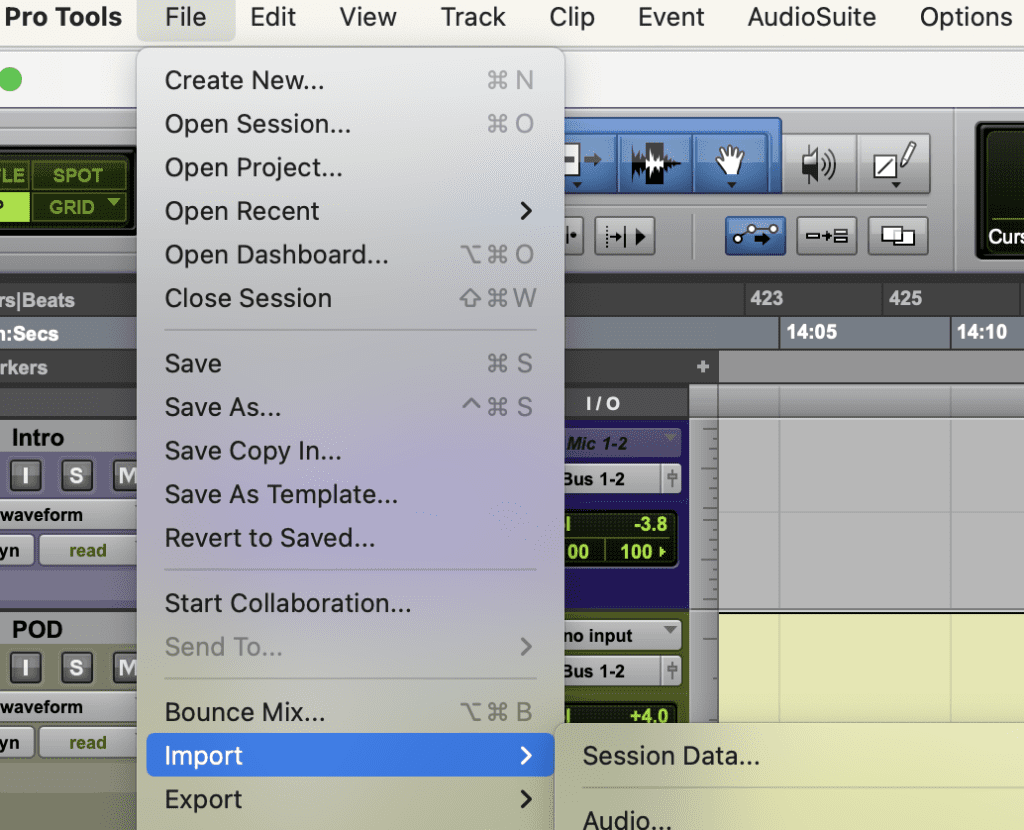
This is often as simple as clicking ‘File’ and then ‘Import’. Remember, it’s essential to keep your files organized to make this process smoother.
Initial Audio Cleanup
Once your files are imported, the initial audio cleanup begins. This is where you’ll remove any background noise or unwanted sounds that could distract your listeners. Depending on the how cleanly the audio was recorded, you may have to use some De-Reverb as well.
Most editing software has tools that can help with this. It’s a delicate balance, though – you don’t want to remove so much that you ruin the integrity of the dialogue.
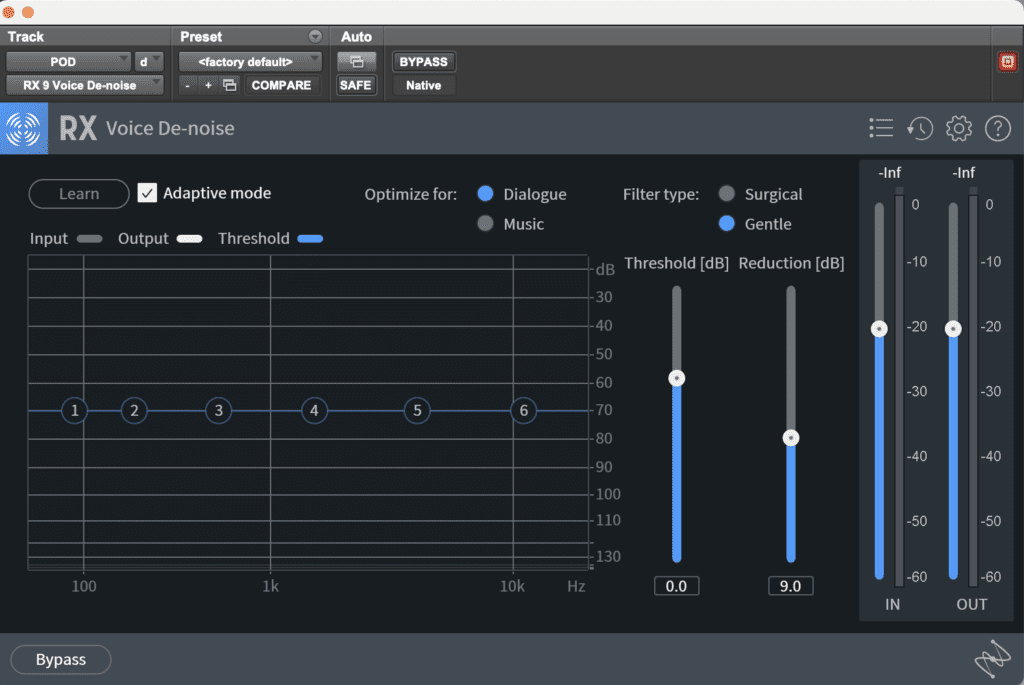
Some Of Our Favorite Audio Cleanup Tools
Content Editing
Next, we move onto content editing. This is where you’ll cut out any mistakes, unnecessary parts, and long pauses. It’s all about making the podcast flow smoothly and keeping your listeners engaged.
This might involve removing ‘um’s and ‘ah’s, or cutting out sections where the speaker goes off-topic. It’s a meticulous process, but it’s worth it for the polished end result.
Additionally, this is where you cut chunks of an episode. For example, perhaps a guest on your show said something they regret and they want to cut it. You’d locate the timecode of that and cut it out.
Sound Design
Sound design is where you can really start to get creative. This involves adding music, SFX, or any additional elements to create a story. You may want to add levity, or build tension to paint and auditory picture.
It’s important to choose music that fits the tone of your podcast and to use sound effects sparingly – you don’t want to overwhelm your listeners.
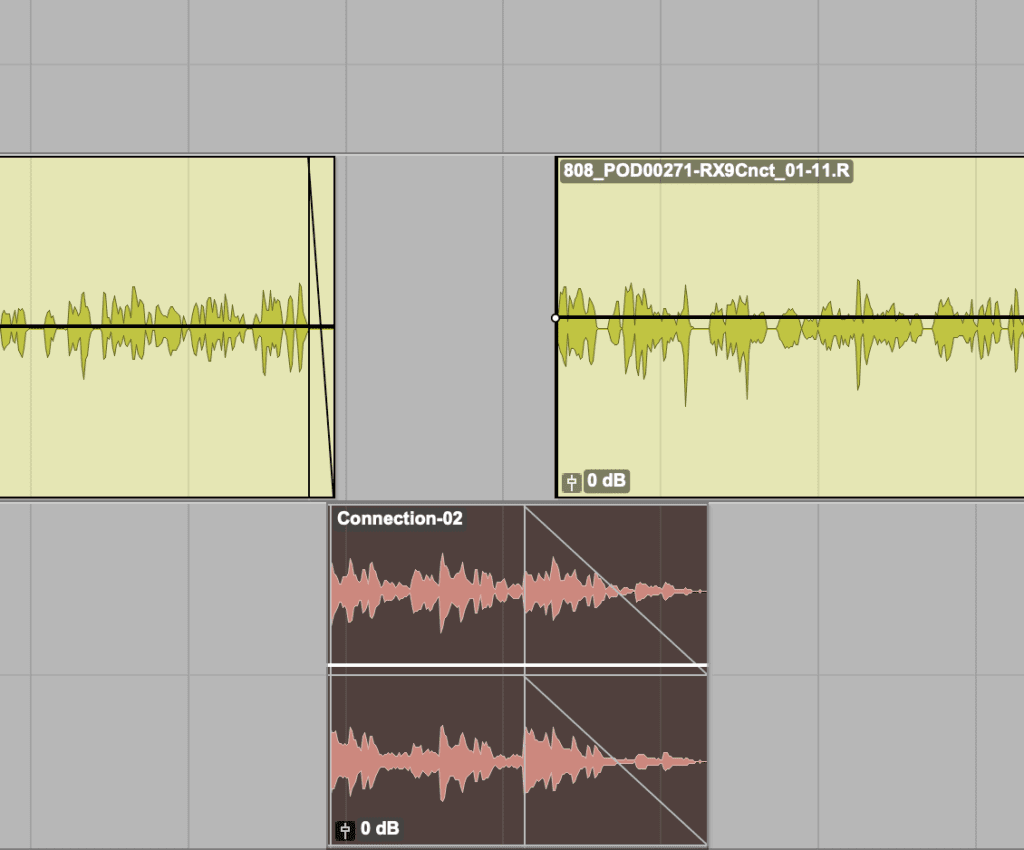
Quality Control and Exporting
Finally, it’s time for the last quality check. Listen through the entire podcast one last time to catch any remaining issues. Once you’re happy with it, you can export the podcast in the right format.
Most podcast platforms prefer MP3 files, but it’s worth checking the requirements of the platform you plan to use. Then, your podcast is ready to be shared with the world!
How To Edit a Podcast – Advanced Techniques
Enhancing Audio Quality
Techniques such as equalization, compression, and normalization can significantly improve the sound of your podcast.
Equalization allows you to adjust the balance of different frequency components, helping to bring out the clarity in your voice.
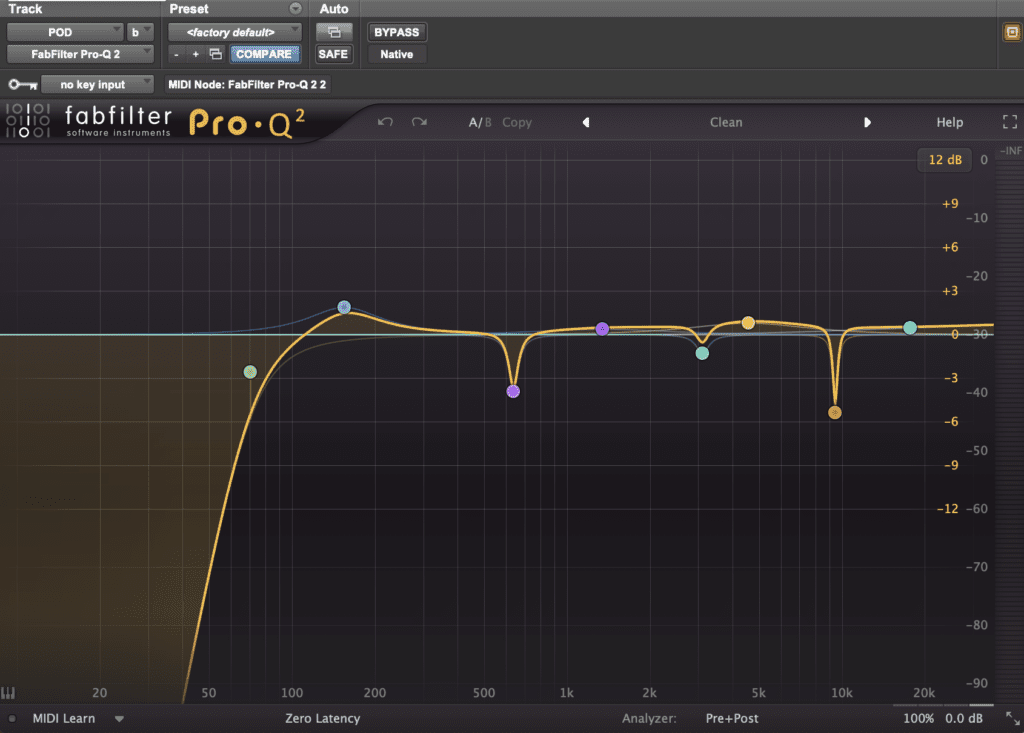
Some eq’ing
Compression helps to reduce the dynamic range of your audio, making the loud parts quieter and the quiet parts louder, resulting in a more consistent volume.
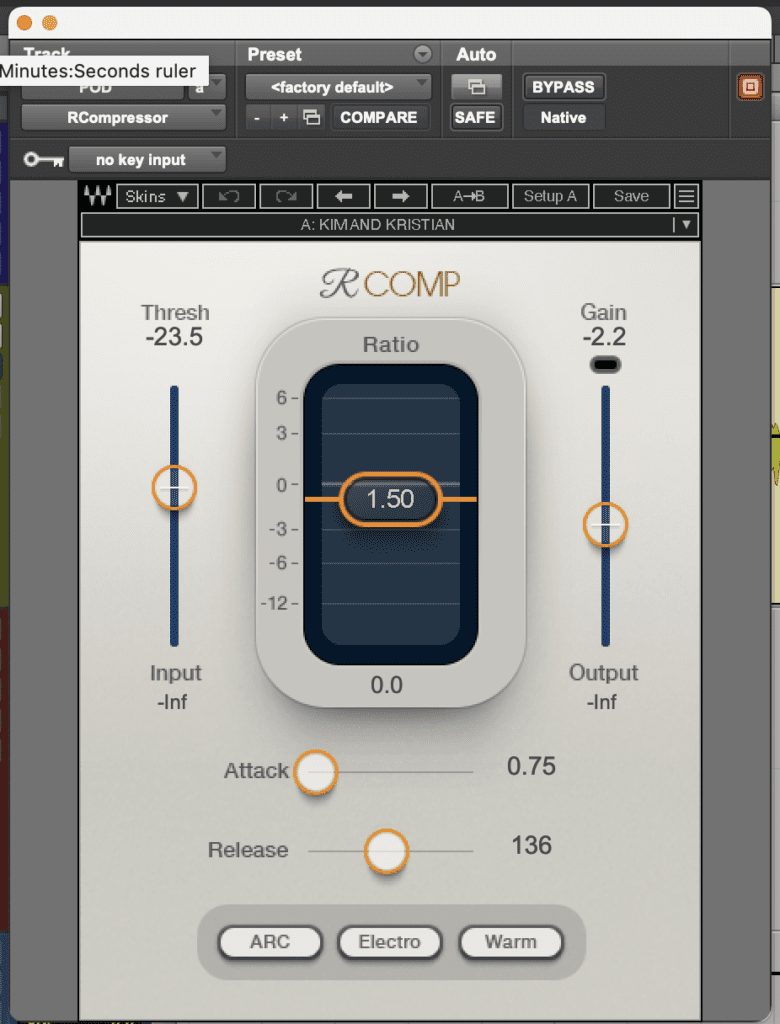
Some Compressing
Normalization, on the other hand, adjusts the overall volume of your audio file to a target level, ensuring that your podcast isn’t too loud or too quiet.
These advanced podcast editing techniques can make a world of difference in the final product, enhancing your podcast audio and making it more enjoyable for your listeners.
Improving Flow and Pacing
When researching how to edit a podcast, you’re likely to come up on the topic of dialogue flow and pacing. Getting the right flow and pacing of your podcast is another key aspect of podcast editing. Adjusting the tempo, adding strategic pauses, and using room tone can significantly enhance the listening experience.
Adjusting the tempo can help to keep your podcast moving at a comfortable pace, ensuring that it doesn’t feel too rushed or too slow.
Adding pauses can provide breathing room for your listeners, giving them a moment to absorb what they’ve just heard.
Using room tone, the ambient noise of your recording environment, can help to smooth out edits and maintain a consistent sound throughout your podcast.
When editing a podcast, these techniques can help to create a more engaging and enjoyable listening experience, keeping your audience hooked from start to finish.
Creative Editing Techniques
When learning how to edit a podcast, it’s essential to consider the role of creative editing techniques. These can add a unique touch to your podcast, setting it apart from the crowd.
For instance, using soundscapes can create a rich audio environment, immersing your listeners in the world of your podcast. This could range from the ambient noise of a bustling city to the soothing sounds of nature. Incorporating audio storytelling elements, such as sound effects and music, can also enhance your narrative, adding depth and dimension to your podcast.
These creative techniques are integral to the process of how to edit a podcast, helping to bring your content to life and create a captivating and immersive listening experience for your audience.
Choosing The Right Podcast Editing Software
Types of Podcast Editing Software
Some DAWS are simple and user-friendly, perfect for beginners, while others offer advanced features that cater to seasoned podcasters.
From open-source software like Audacity, which provides basic editing tools, to premium software like Adobe Audition, known for its advanced audio editing capabilities, the options are vast.
Other popular choices include Alitu, GarageBand, and Hindenburg Journalist, each offering a unique blend of features to enhance your podcast production process.
Here at The Podcast Haven, we’ve mastered how to edit a podcast using the power of ProTools for all our editing and mixing needs. Recognized as the industry benchmark for advanced audio production, ProTools might initially present a challenging learning curve.
However, with patience and practice, it equips you to handle even the most complex podcast editing projects and craft exquisite mixes. It’s crucial to acknowledge that our proficiency in ProTools is a cornerstone of our ability to transform any podcasting project into a powerhouse of engagement and quality.
Reviews Of Popular Podcast Editing Software
Let’s delve into some popular podcast editing software and their reviews.
Audacity is a free, open-source software that’s perfect for beginners due to its simplicity.
Adobe Audition, on the other hand, is a premium software known for its advanced audio editing capabilities, excellent noise reduction features, and batch-processing capabilities.
Alitu is an easy-to-use software that automates many aspects of the editing process, making it a favorite among non-tech savvy podcasters.
GarageBand, available for free on Apple devices, is user-friendly and offers a range of features for recording and editing podcasts.
Lastly, Hindenburg Journalist is a professional-grade software designed specifically for storytellers and journalists, offering advanced audio editing tools and features.
Each of these software options has its strengths and weaknesses, so it’s crucial to choose one that fits your specific needs and skill level.
Common Podcast Editing Mistakes
Over-Editing
One common pitfall in podcast editing is over-editing. It’s easy to get carried away and want to remove every “umm”, “uhh”, or pause in your podcast.
However, doing so can make your podcast sound unnatural and robotic. Remember, your listeners are here for an authentic conversation, not a perfectly polished speech.
So, it’s okay to leave in some of those verbal quirks. They make your podcast sound more human and relatable. If an “umm” or a pause is too long and interrupts the flow of the conversation, you can cut it out. But if it’s quick and doesn’t disrupt the story, it’s best to leave it in.

That’s A lot of Edits!
Our philosophy is to remove around 60-70% of verbal ticks, while still making the conversation flow naturally.
Ignoring Audio Quality
Another common mistake is ignoring audio quality issues. This can include things like background noise or inconsistent vocal levels.
These issues can be distracting for your listeners and can make your podcast sound unprofessional. To avoid this, make sure to do a thorough audio cleanup during your editing process.
Remove any background noise and make sure the volume levels are consistent throughout your podcast.
Neglecting The Listener Experience
Neglecting the listener experience is a common mistake new editors make when they’re learning how to edit a podcast. This happens when they focus too much on the technical aspects of editing and forget about the storytelling.
We’ve been guilty of it too! It takes a while to get a feel for tasteful editing vs. technical editing.
Remember, your podcast is not just an audio file, it’s a story. And your editing should enhance that story, not distract from it.
This includes being thoughtful about how you use music. Don’t just loop one song and drop it in throughout the episode. Instead, use different songs to create different moods and to enhance different parts of your story.
Also, be careful not to disrupt the speaker’s rhythm and flow by over-editing breaths or cutting them in half. This can be very noticeable to your listeners and can disrupt their listening experience.
Final Thoughts
In the journey of podcast editing, we’ve explored its definition and impact, the importance of preparation, the step-by-step editing process, advanced techniques, and the right software to use.
We’ve also delved into common mistakes and how to avoid them. Remember, podcast editing is not just about technical precision, but about enhancing the listener’s experience and telling a compelling story.
It’s a blend of art and science, requiring both creativity and technical skills. As you continue to hone your editing skills, keep these insights in mind. And finally, every great podcast is a result of continuous learning and improvement.
Keep Listening, Keep Engaging and Keep Creating
Connect With Us:
- The Podcast Haven Homepage
- Our YouTube
- TikTok
- Listen To Our Flagship Podcast CLIPPED on Apple Podcasts
- Listen To Our Flagship Podcast CLIPPED on Spotify
More Blog Posts To Help You Create Better Content:
- Amazon Influencer Program: The Easiest Way To Make Money Online
- How To Start a Podcast With No Audience: 8 Actionable Tips To Build An Audience
- Castmagic: An AI Tool Repurposes Podcast Content
- Gain vs Volume: A Podcaster’s Guide To Clean Audio
- Shure MV7 Review: Why This Hybrid Mic Is Ideal For Intermediate Podcasters

